Abstract
Parameters of the bioassay based on the gibberellin-induced reducing sugar release of barley endosperm were investigated. Procedures for the rapid handling and processing of up to several hundred treatments without loss in sensitivity of the test are described, and the effects of variations in many aspects of the bioassay were assessed.
In general, the variations in varieties, techniques, additives, conditions, and even gibberellins, all illustrate the stability, sensitivity, and adaptability of the hormone-induced response and emphasize its utility as a gibberellin bioassay.
Full text
PDF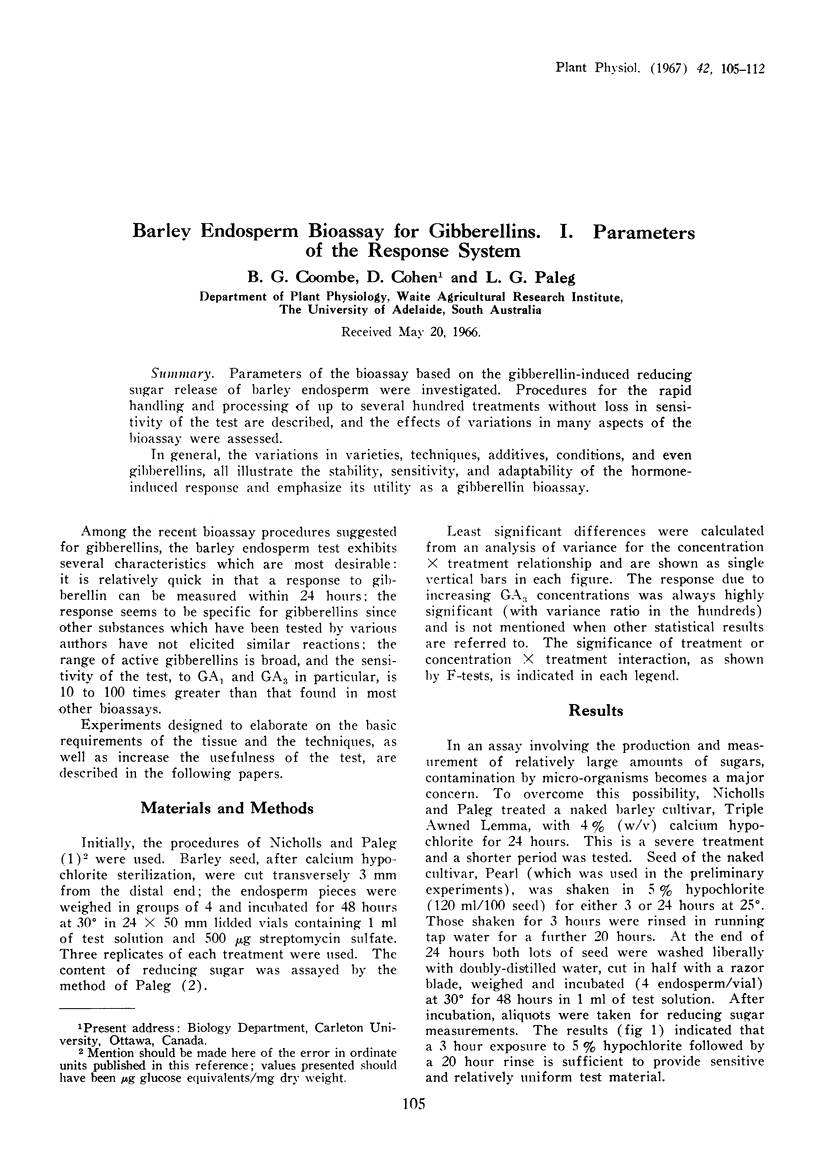
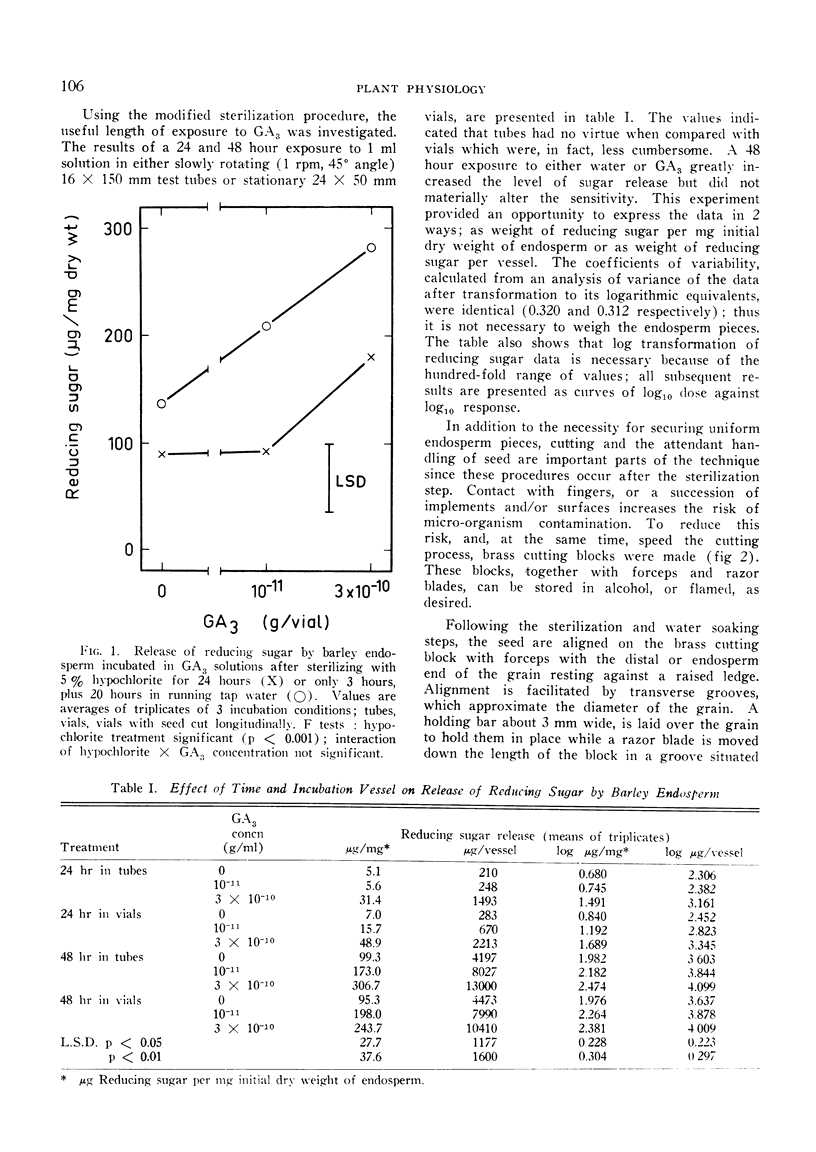
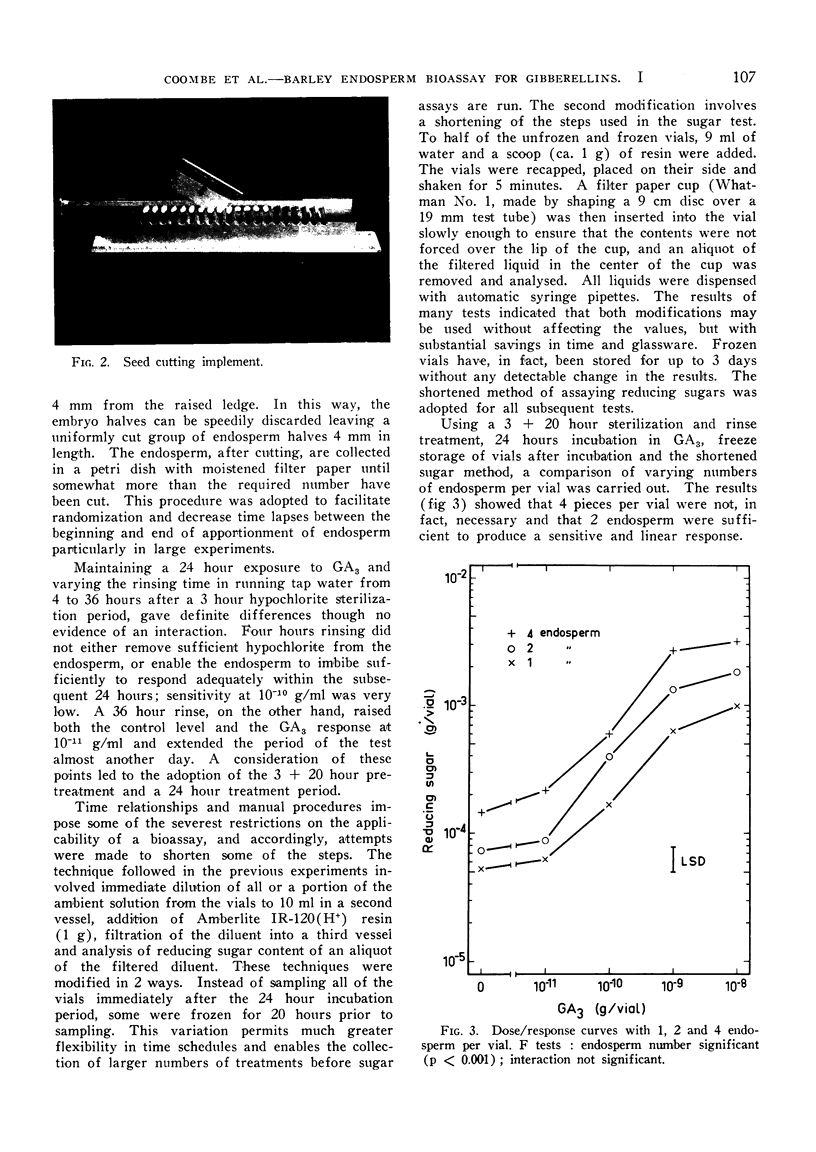
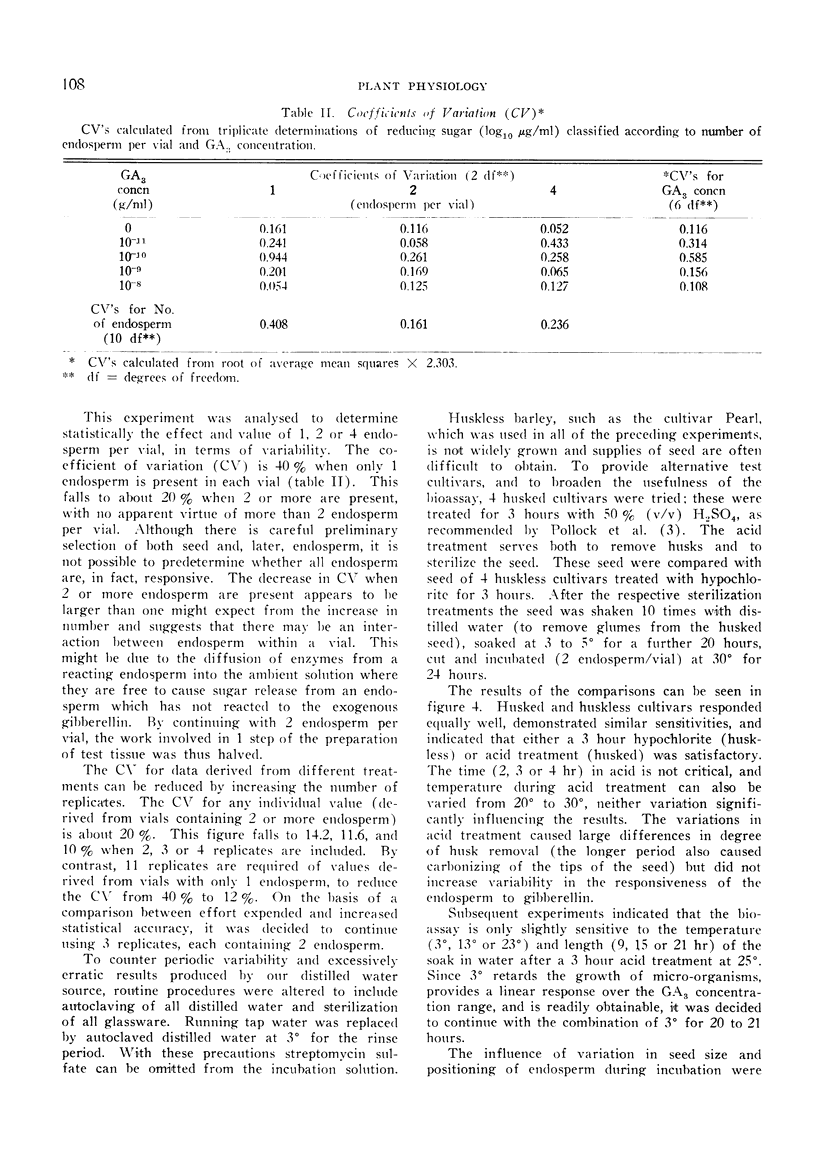
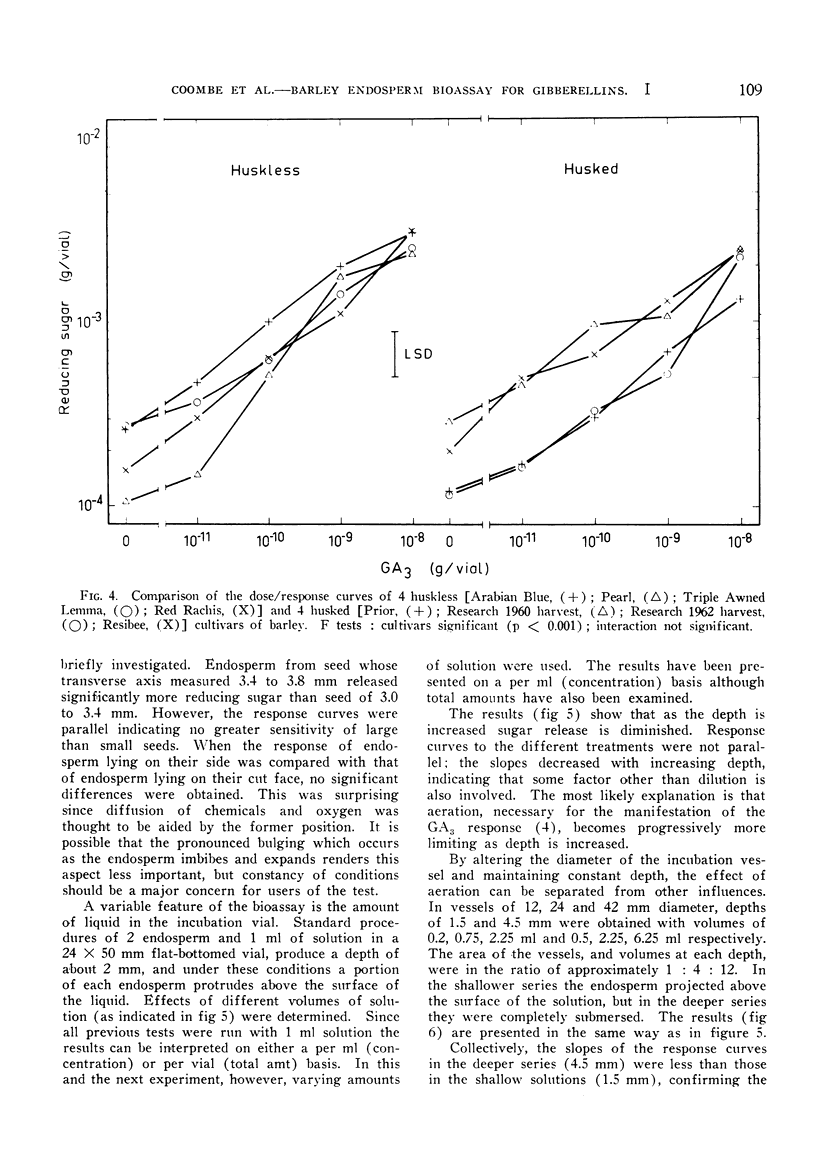
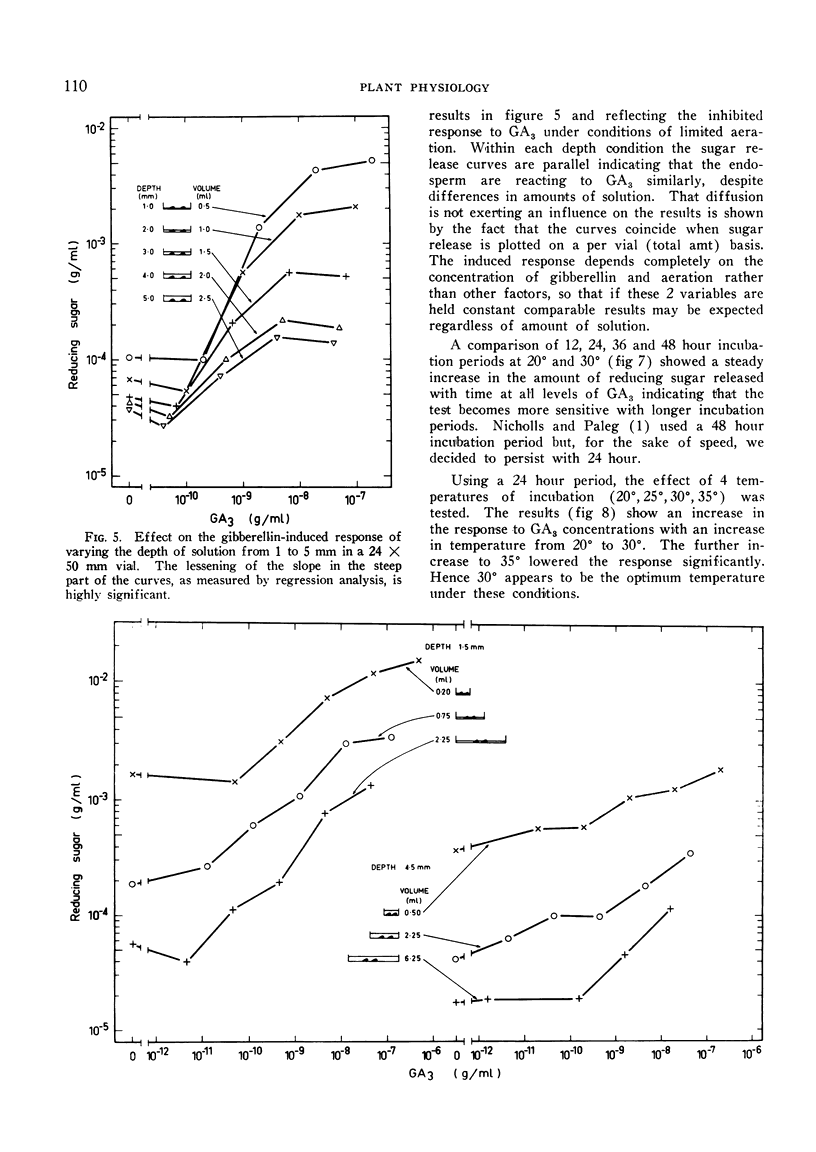
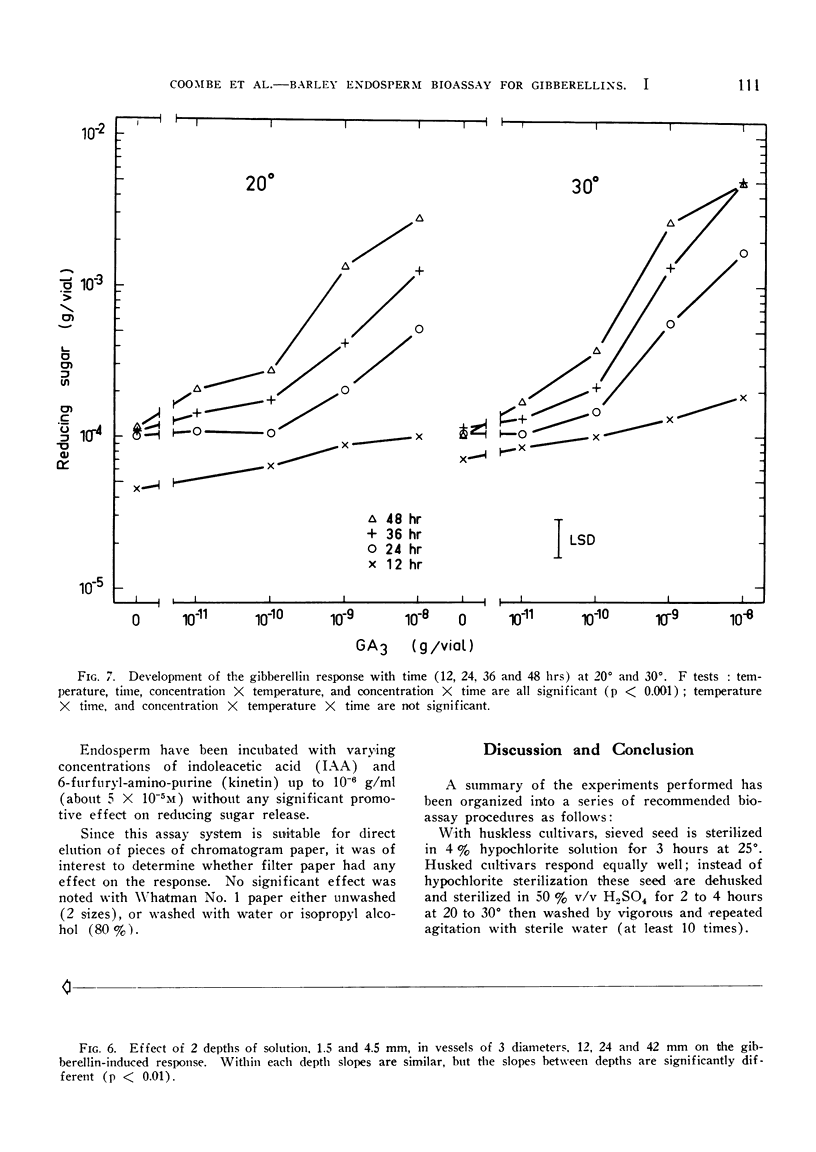
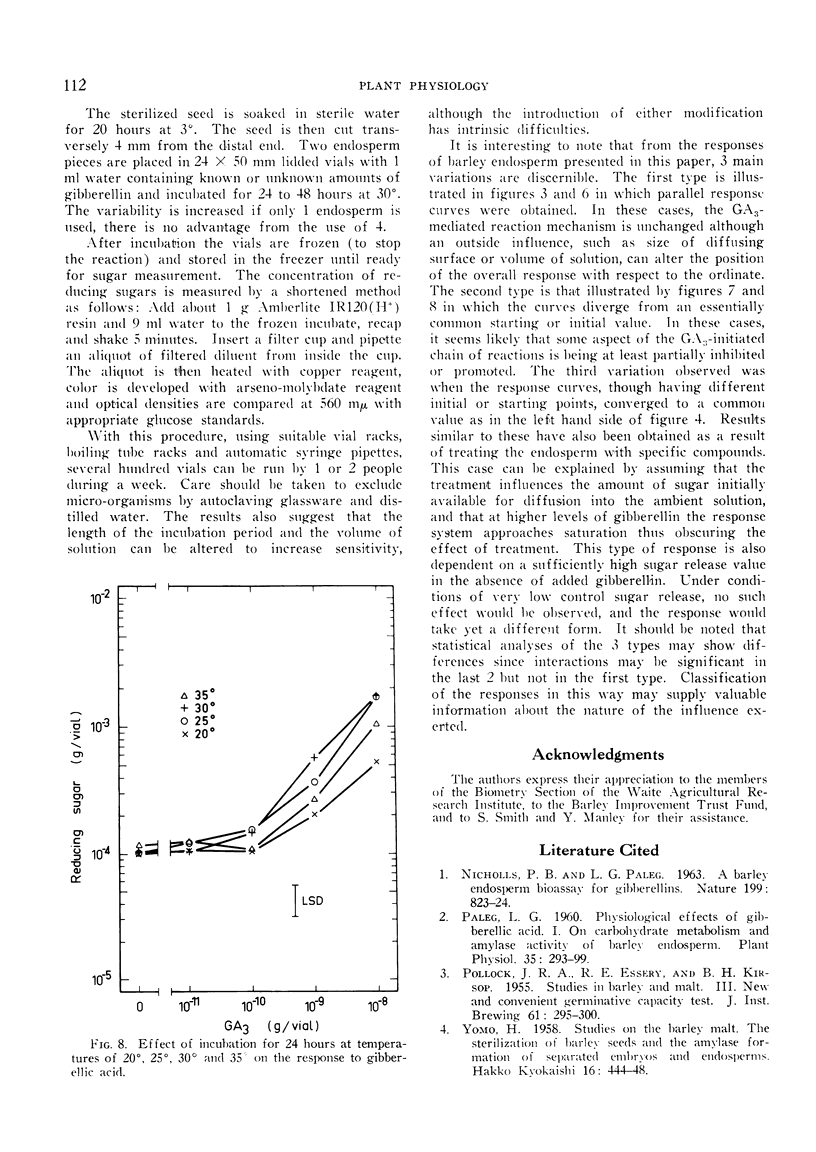
Images in this article
Selected References
These references are in PubMed. This may not be the complete list of references from this article.
- ALTMANN H., STEHLIK G., KAINDL K. IN VIVO INVESTIGATION OF THE REMOVAL OF TRACE ELEMENTS FROM NUCLEIC ACIDS OF YEAST BY IONIZING RADIATION. Nature. 1963 Aug 24;199:823–823. doi: 10.1038/199823a0. [DOI] [PubMed] [Google Scholar]
- Paleg L. G. Physiological Effects of Gibberellic Acid: I. On Carbohydrate Metabolism and Amylase Activity of Barley Endosperm. Plant Physiol. 1960 May;35(3):293–299. doi: 10.1104/pp.35.3.293. [DOI] [PMC free article] [PubMed] [Google Scholar]



